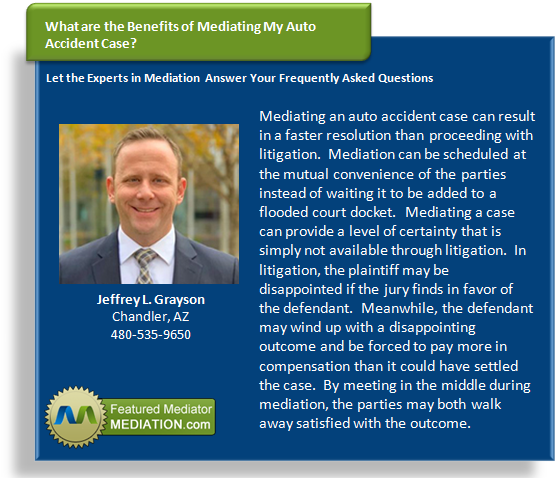The Family Mediation Process – Step by Step Guide
 Family mediation continues to grow in popularity for couples that are divorcing and dealing with other legal disputes. The process makes it easier to resolve conflict and reach agreements about custody, financial matters, and other issues.
Family mediation continues to grow in popularity for couples that are divorcing and dealing with other legal disputes. The process makes it easier to resolve conflict and reach agreements about custody, financial matters, and other issues.
Mediation involves various steps, including:
Receiving the Mediation Referral
Step one is to get a referral for mediation and to a mediator. This can come from the court or from either party’s lawyer. In some situations, mediation will be arranged without much input from the participants, while in other cases they are free to choose the date, time, location, and mediator.
Information and Assessment
 The next step allows the mediator to familiarize him or herself with the situation. The mediator typically meets with each party individually and assesses whether mediation is suitable for the circumstance. The mediator will determine if both parties are entering mediation in good faith and whether they will be able to make headway. Mediation is a voluntary process, but this does not mean everyone will enter the process willing to negotiation. The part of the mediation might occur in a separate meeting or on the same day as the mediation but earlier.
The next step allows the mediator to familiarize him or herself with the situation. The mediator typically meets with each party individually and assesses whether mediation is suitable for the circumstance. The mediator will determine if both parties are entering mediation in good faith and whether they will be able to make headway. Mediation is a voluntary process, but this does not mean everyone will enter the process willing to negotiation. The part of the mediation might occur in a separate meeting or on the same day as the mediation but earlier.
Mediation Sessions
Next comes the heart of the mediation. This is when the mediator brings everyone together to discuss the situation and potential resolutions. The mediator’s job is to facilitate communication between the parties and ensure they stay on track and keep the end goal in mind. Each party will be given an opportunity to share his or her concerns and opinions and the mediator will encourage everyone to consider pros and cons of each possible outcome.
The goal of the mediator is to keep the focus on the matter or matters at hand and to help the parties reach an overall consensus that satisfies everyone. As much as couples might want to resolve their issues in mediation, the situations are usually charged emotionally, and the situations can spiral out of control quickly. The mediator works to prevent this from happening and does his or her best to keep the process positive and productive.
Documentation of the Agreement
 If mediation proves successful in resolving the family’s issues, the mediator will draft a record which summarizes the issues discussed and the resolutions decided upon. If mediation makes progress but has not fully resolved the matter, the mediator will document what was resolved and what is still outstanding for an upcoming session.
If mediation proves successful in resolving the family’s issues, the mediator will draft a record which summarizes the issues discussed and the resolutions decided upon. If mediation makes progress but has not fully resolved the matter, the mediator will document what was resolved and what is still outstanding for an upcoming session.
If the situation is unable to be fully resolved, parties can use the documentation to avoid a lengthy court battle over issues they agreed upon. However, the discussions that take place during mediation are confidential, so both parties must agree to move forward in the same manner.
Any documents in mediation do not become legally binding until all parties have agreed. It is then presented to the court for final approval.
Mediation can be extremely effective for resolving family legal matters peacefully. For more information or to schedule a time to speak to Hal Wotitzky about the benefits of family mediation, contact him at 941-621 4249.
Hal Wotitzky
www.callthemediator.com









